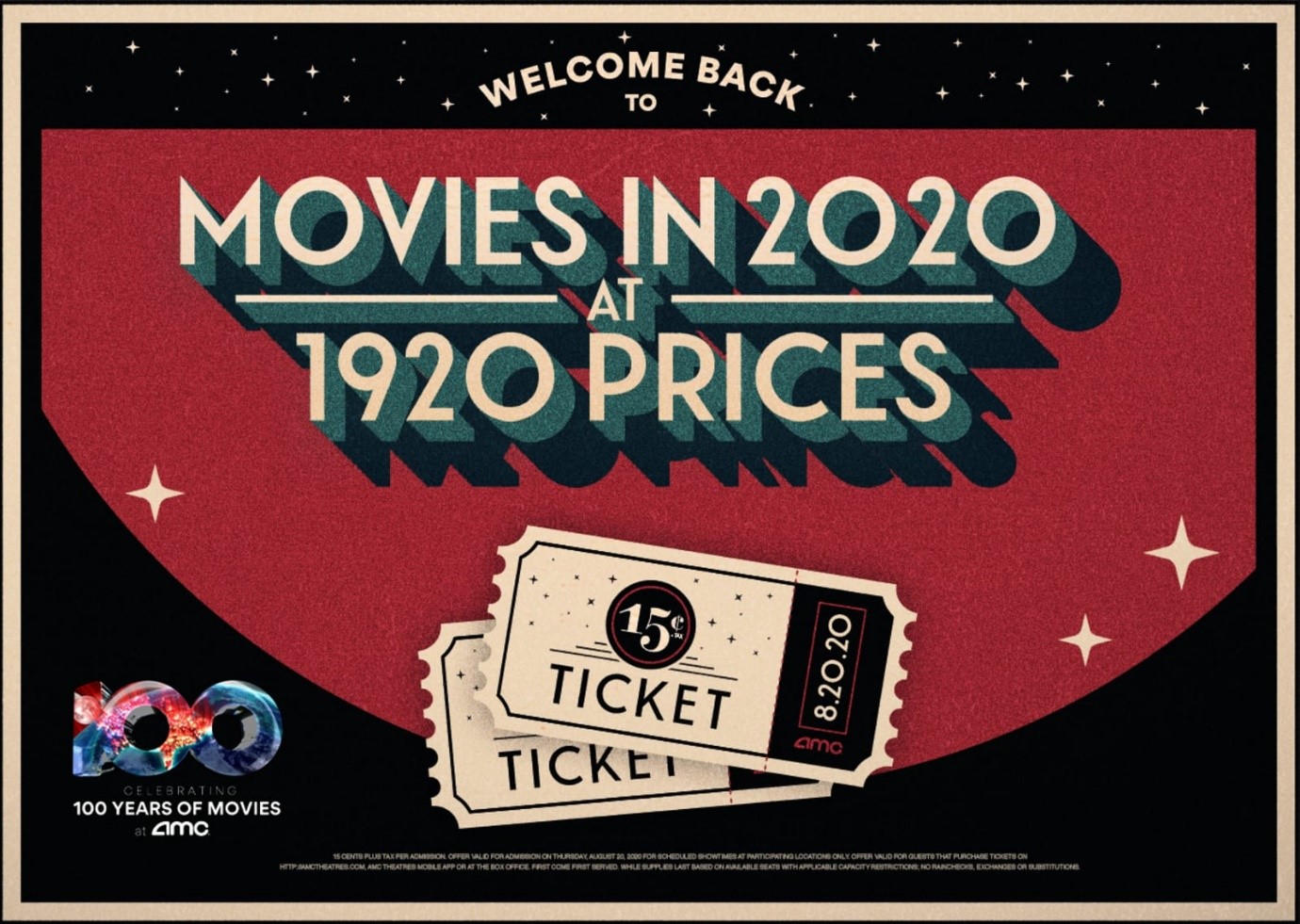One of the things that has been noticeably absent this summer due to COVID-19 is the usual run of summer blockbusters. It’s been a long road to safe reopening.
At the end of August, finally, there is good news for movie lovers. AMC Theatres announced it will open over 100 theaters as of August 20th, rolling out to open more than half of their locations by September 3.
To mark the reopening and 100 years of movies, AMC is offering 1920 prices at the theater for one day only.
Limited time bargain
This offer is only available to those fortunate enough to be in the vicinity of one of the theaters opening on the 20th. They get to snag the bargain of a lifetime: just 15 cents plus tax for any movie showing that Thursday.
This is a great opportunity to be able to echo your own grandparents in boasting “I remember when movie tickets cost just 15 cents!”
Read more in: A nickel-and-dime reopening offer from AMC
Why is offering 15 cent tickets such a win? In the first place, the people who do snag those tickets on Thursday will likely feel they saved enough to justify a splurge at the concession stand. In the second place, the offer brought AMC so much attention that just about every single news outlet in the country covered the story, giving it tens of thousands of dollars worth of free publicity.








